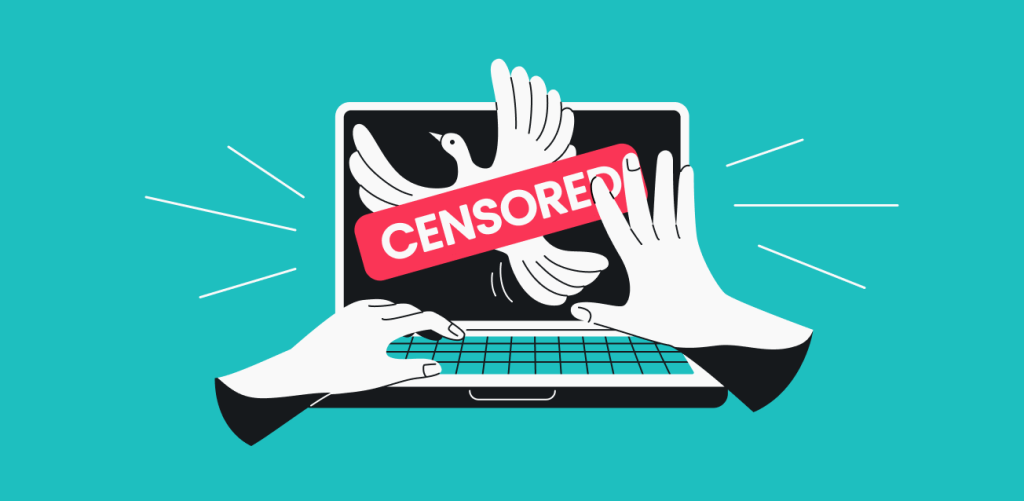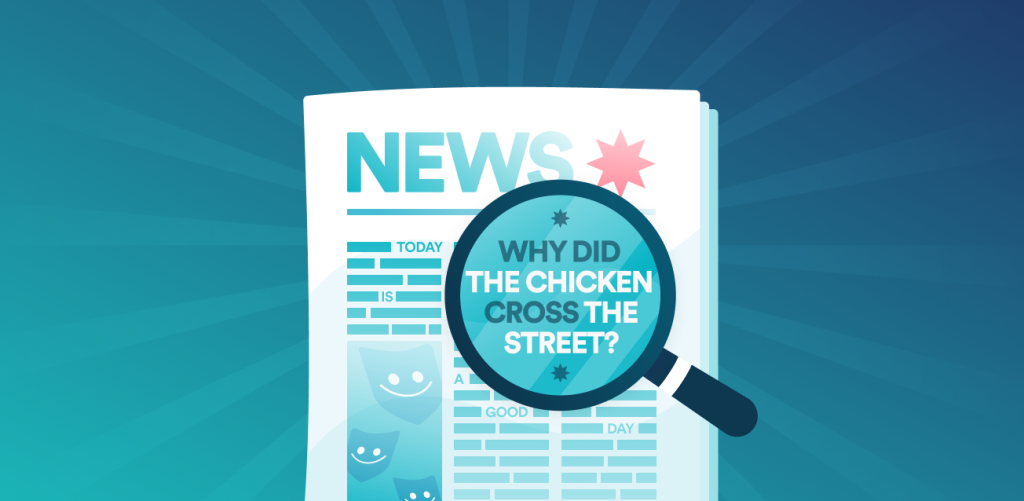
Authoritarian governments have turned to internet and social media disruptions to maintain their rule and curb civil unrest, opposing political parties, free speech, and looming socio-economic concerns. But how does 2022’s global censorship landscape compare with previous years?
Stick around as we recap key developments in global internet censorship, i.e., the legal control, suppression, or manipulation of what can and cannot be watched, seen, downloaded, or published on the world wide web.
Note: Surfshark began documenting local network connection disruptions in Jammu & Kashmir in March 2022 using data from internetshutdowns.in. This source includes only the most recent cases, and at the time of the study’s release, data for January and February was not available anymore. In February 2023, we obtained 18 cases from Access Now’s “Internet shutdowns in 2022” report that occurred in Jammu & Kashmir in January and February of 2022, bringing the total number of restrictions in Jammu & Kashmir to 42.
2022’s internet censorship: a year in recap
The table below recaps some of the more prominent benchmarks in internet/social media censorship throughout 2022.
Countries censoring the internet in 2022 | 19 (32, including countries that imposed long-term restrictions before 2022) |
|---|---|
Internet censorship cases that took place in 2022 | 78 (112, including cases starting before 2022) |
The average duration of an internet connection disruption | 33 hours |
The average duration of social media censorship | 114 days |
The main catalyst for internet censorship | National protests and political turmoil |
The region with the most internet censorship cases in 2022 | Asia |
The social platform authoritarian governments hate the most | Facebook |
The most crippling internet censorship events of 2022
Of the multiple high-profile internet censorship events in 2022, four regions stand out above all others. Russia, India, Iran, and the Jammu and Kashmir region gained international media coverage for frequent internet and social media disruptions. Below is a little more context on the catalysts at play.
Russia – key social platforms banned in the Russo-Ukrainian War
February 26, 2022. To curb local anti-war protests, Twitter was restricted in Russia, followed by Facebook the next day, Instagram was also restricted in March 2022. The country has also blocked access to major international news sites.
India – military recruitment protests disrupt internet access
June 17, 2022. Significant disruption to internet connectivity was recorded in Bihar state – Eastern India. This widespread information blackout came during mass protests opposing India’s new military recruitment policy, dubbed Agnipath or Path of Fire, which aims to cut military salaries, pensions, and overall operating costs.
Iran – mass-scale disruptions in the wake of Mahsa Amini’s death
September 19, 2022. The death of Mahsa Amini at the hands of Iran’s morality police sparked mass outrage in the Kurdistan province and the rest of the country. The outcry resulted in a near-total disruption to internet services and mass-scale disruptions to mobile networks. Moreover, Instagram and Whatsapp are now nationally restricted.
Jammu and Kashmir – internet freedom remains unlikely for now
Residents of Jammu and Kashmir have been facing unprecedented internet restrictions since 2019 when the region was downgraded from an autonomous state to a union territory by the Indian government. In 2022, the Jammu and Kashmir region experienced 24 internet disruptions – more than any country in the world.
Global overview of internet censorship in 2022
32 countries were affected by restrictions overall, with a total of 112 restrictions. 34 of these were ongoing before the start of 2022, while 78 disruptions started during 2022.
Out of the 34 ongoing internet censorship cases, only 2 ended before the year was out – meaning that 32 of these disruptions (in 16 countries) continued into 2023. Here are some of the longest-running ones:
- February 2009 – VoIP as a service was banned in Oman. In 2020, and in light of the pandemic, certain VoIP services were subsequently permitted; however, WhatsApp Calling remains blocked.
- May 2009 – Iranian government blocked Facebook access. Opposition parties accused President Mahmoud Ahmadinejad of trying to curb support for rivals before elections.
- June 2009 – Iran’s leading mobile phone network was cut in the capital of Tehran. Additionally, Facebook and YouTube were also restricted.
- July 2009 – Twitter, Facebook, and YouTube were banned in 2009 and are still prohibited in China to this day.
- December 2009 – YouTube was blocked in Turkmenistan by its only ISP, and the ban has been in place ever since.
There were 78 new disruptions in 2022 – 40% fewer than in 2021
In 2022, new internet disruption cases decreased by 40% compared to 2021
- The 78 new cases in 2022 affected 2.3 billion people. This number jumps to 4.2 billion if ongoing cases that started before 2022 are included.
- Asia leads by internet disruptions and accounts for 47% of new global cases, with 1 in 5 Asian countries having imposed internet restrictions in 2022.
- At the end of the year, 41 disruptions were still ongoing and continued into 2023 (9 started in 2022, and the rest even earlier).
The Jammu and Kashmir region continued to lead by disruption count in 2022
Since 1947, the Jammu and Kashmir region has been a disputed territory high in political and civil turmoils. In 2019, after being downgraded from an autonomous state to a union territory, internet disruptions intensified even more. Here is how the Jammu and Kashmir region compares to other countries with the highest number of new internet restrictions in 2022.
- Jammu and Kashmir – out of 24 cases (or 31% of global cases), all were local internet restrictions, and, without fail, all were related to political turmoil.
- Iran – out of 11 cases, 10 were related to protests, and 1 was connected to political turmoil. Cases included 2 social media disruptions and 4 local and 5 nationwide internet disruptions. Platforms blocked in 2022 include WhatsApp and Instagram, while Twitter and Facebook have been blocked since 2009.
- India – all 10 cases were classed as local internet disruptions and 9 were related to protests, and 1 was due to political turmoil. Furthermore, TikTok has been banned in India since June 2020.
Burkina Faso, Russia, and Azerbaijan had the longest-running internet disruptions in 2022
Here are the longest-running internet restrictions of 2022, keeping in mind these do not include cases that started before 2022.
Internet disruptions by type and cause
In 2022, 39 (50%) of new disruptions happened because of protests, and 39 (50%) happened because of political turmoil.
A word on the four causes of internet censorship
Protests are public objections toward a governing party’s decisions or actions. Some common protest examples could include labor strikes, marches, rallies, and sit-ins, as well as riots and looting on the more extreme side of the scale.
Political turmoil is a state of confusion, uncertainty, or disorder within a country’s governing political party, unrelated to protests, elections, or internet law.
Elections and internet law are two other common reasons for disruptions. While no noteworthy disruptions were related to these causes in 2022, 6 election-related disruptions were reported in 2021.
Types of internet disruptions
Internet disruptions can be subdivided into three distinct categories – social media-related, local, and national.
- Governments might disrupt specific social media platforms in their country to hinder the spread of information.
- Local internet disruptions may occur in certain provinces, states, or districts. This type of censorship can be enforced to curb localized protests, rallies, or similar from spreading to the entire country.
- In national internet disruptions, the internet may be restricted across the entire country. This is the strictest form of internet censorship and the most economically devastating. Protests are the most common cause of nationwide internet restrictions.
10 countries imposed the strictest form of internet censorship in 2022 – national internet restrictions:
- Asia: Afghanistan, Iran, Kazakhstan, Sri Lanka, Uzbekistan
- Africa: Burkina Faso, Sierra Leona, Sudan, Zimbabwe
- South America: Cuba
Facebook is the most-hated platform by autocratic governments
Facebook is the single most hated social media platform by autocratic governments and remained highly censored in 2022. In fact, since 2015, a staggering 46% of the global population has, in some way or another, been affected by government-imposed Facebook restrictions.
Four countries disrupted Facebook in 2022: disruptions in Burkina Faso and Russia continued into 2023, while Sri Lanka and Jordan had relatively short restrictions that ended in 2022.
Instagram takes second place as the most blocked social media platform, followed by TikTok, which is being restricted by more and more authoritarian countries, including Azerbaijan, Armenia, and Jordan, in 2022, along with Pakistan and Uzbekistan in 2021.
Why it’s important to speak about internet censorship
2022 started with 34 ongoing internet censorship cases and ended with 41, while an estimated 4.2 billion people experienced internet censorship throughout the year.
While we all know that internet censorship carries a variety of damaging and dangerous consequences, not least for those on the front line, it’s the attack on people’s opportunities for growth, knowledge, freedom, and democracy that makes the issue vital and well worth speaking about.
Methodology
Please refer to https://surfshark.com/research/internet-censorship/methodology for methodology, data sources, and data spreadsheet.
Note: Surfshark began documenting local network connection disruptions in Jammu & Kashmir in March 2022 using data from internetshutdowns.in. This source includes only the most recent cases, and at the time of the study’s release, data for January and February was not available anymore. In February 2023, we obtained 18 cases from Access Now’s “Internet shutdowns in 2022” report that occurred in Jammu & Kashmir in January and February of 2022, bringing the total number of restrictions in Jammu & Kashmir to 42.

